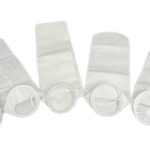
Brass cable glands are an essential component in the assembly of electrical equipment. Also known as strain relief fittings, they provide mechanical cable retention and termination points. Cable glands are available in a variety of sizes and styles to accommodate the different types of cables used in electrical equipment.
This article provides an overview of brass cable glands, including how they work and their benefits. It also covers the different types of cable glands available in the market and their applications.
What are brass cable glands?
Brass cable glands are devices for terminating and mechanically connecting cables. They are used in a variety of industries, including construction, automotive and electronics. Brass cable glands provide a secure and reliable connection between cable and equipment. They are available in a variety of sizes and configurations to meet the needs of different applications.
The benefits of using brass cable glands
Brass cable glands are a cable termination device used to secure cables and provide strain relief. They are commonly used in a variety of industries, including automotive, aerospace and marine. Brass cable glands are available in a variety of sizes and styles to suit different applications.
Brass cable glands offer many advantages over other types of cable glands. They are more corrosion resistant, have better conductivity, and are easier to install. Brass cable glands are also less likely to loosen over time, making them ideal for use in high vibration environments.
Features of brass cable glands
Brass cable glands are a type of cable gland used to terminate and secure cable ends. Brass cable glands are available in a variety of sizes and styles to suit different applications. Typically, brass cable glands are used in hazardous or wet locations where other materials are not suitable.
Some of the most common characteristics of brass cable glands include:
Tamper Resistant
Brass cable glands are typically used where tampering or unauthorized access is a concern. The tamper-resistant design of the brass cable gland helps prevent unauthorized access to the electrical system.
Waterproof
Brass is a highly corrosion-resistant material, making brass cable glands ideal for use in wet or humid environments.
Durable
Brass is a strong and durable metal, making brass cable glands suitable for brass cable glands. Brass is an excellent choice for this application because it resists corrosion and has high wear resistance.
How to choose the right brass cable gland for your needs?
There are many factors to consider when choosing the right brass cable gland for your needs. The first step is to identify the specific needs of the application. Are brass cable glands used in wet or dry environments? Will it be exposed to harsh chemicals or abrasions? Once you have a clear understanding of what brass cable glands are used for, you can start narrowing down your options.
There are three main types of brass cable glands: snap-in, screw-in and bayonet. Each type has its own advantages and disadvantages, so it’s important to choose the one that best suits your needs. Snap-in brass cable glands are easier to install and remove, but they may not be as tight as screw-in or bayonet models. Screw-in brass cable glands provide a more secure connection. They are ideal for use in areas where high vibration or movement can cause cables to break. Screw-in cable glands are also less likely to loosen over time, making them ideal for long-term installations.
How to safely and effectively use brass cable glands?
Cable glands are essential components in many types of electrical equipment. They provide a way to attach cables to the enclosure and secure electrical connections. Brass cable glands are especially common in marine and industrial applications due to their high corrosion resistance.
It is important to follow some basic safety guidelines when working with brass cable glands. First, always make sure the cable glands are the right size for the cable you’re using. Second, always use the correct type of thread sealant to prevent leaks. Finally, always test the connection before putting the device into use.
By following these simple guidelines, you can be sure that your brass cable glands will provide a safe and efficient connection to your electrical equipment.
Conclusion
Brass cable glands are an essential part of any electrical installation. They provide a watertight seal for cables passing through the housing, and they also allow electrical stress relief. Cable glands are available in a variety of sizes and designs, so choosing the right gland for the application is important. With proper installation and maintenance, brass cable glands will provide years of trouble-free service. If you’re interested in our products, please contact us at [email protected].
















